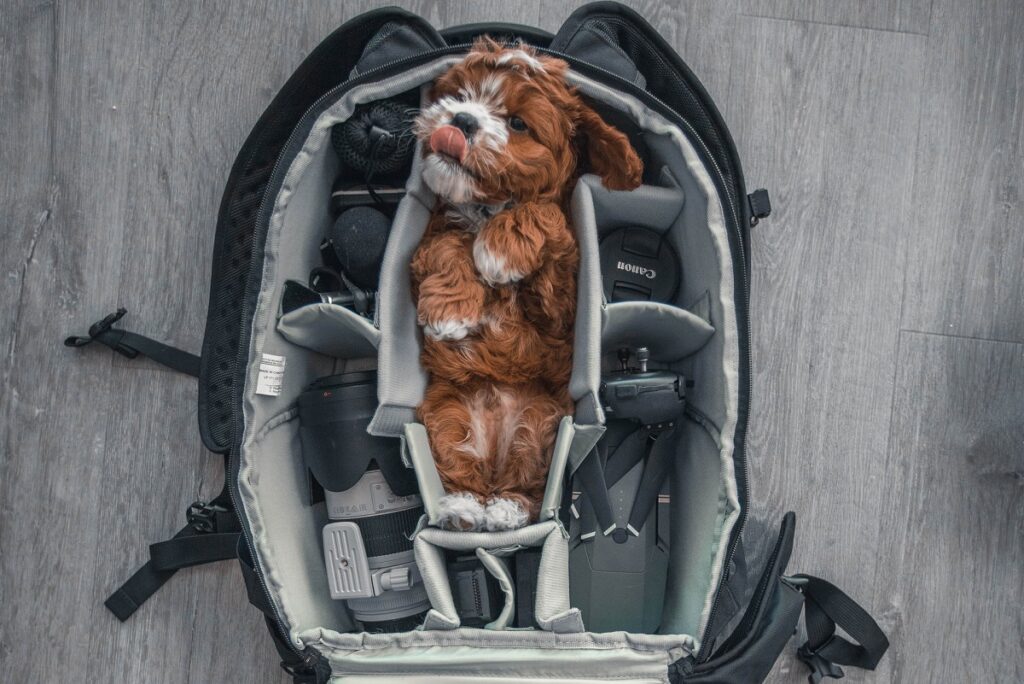Traveling with your dog is a beautiful experience that leaves you with unforgettable memories and recollections of great times with your buddy. Many of you would think dog travel is risky and an uncomfortable journey that demands consistent care, forethought, and a truckload of cash. But a little planning and guide can help you take your furry friend to a world of endless adventures with ease.
Before traveling, take a look at the essential health and safety guidelines for your dog. Also, dog travel by car is different from traveling by air or ship, or train. Each mode of transportation has its pros and cons. Dig deep into this article to find out which one is best for your dog and which things you should keep in your backpack for your canine fellow.
Dog Health and Safety
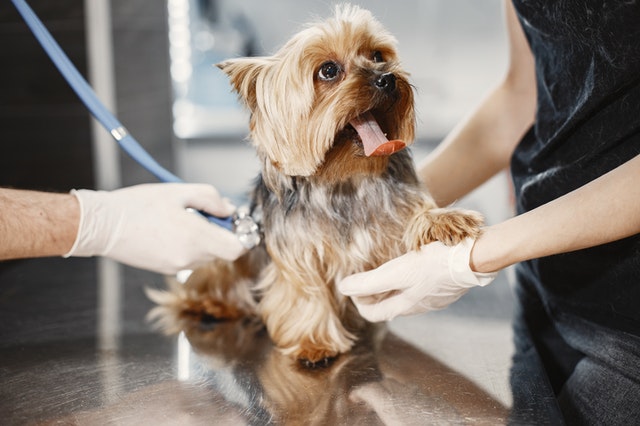
1. Health Check-up
Good mental and physical health ensures proper enjoyment while your dog travels. Before going on an adventure with your dog, take him to the vet for a health and fitness check-up. Make sure that your dog is given rabies and all the necessary vaccination shots. Keep his health records and certifications with you. You may require these for dogs’ air travel as well for emergency treatments in a foreign place.
2. Medications
If your dog is prone to certain diseases, always keep his medicines in your travel bag. You should also consult the vet regarding travel sickness that your dog might suffer. Even if he is in good health and not likely to get ill, bring necessary medications for common diseases in dogs.
3. Food
A change in the place, climate, and routine might affect your dog’s eating habits. It can lead to serious health issues for the dog. Therefore, avoid changing the food type or number of meals during your visit. Keep in mind which dog foods are best and which to avoid. If your dog develops travel sickness, consult the nutritionist or vet for prescribing the dog food that is best for him.
4. Prepare for Emergency
You should update yourself with the emergency numbers and locations of veterinary clinics of your vacation destination. If your dog suffers from any injury or health issues while traveling, immediately take him to a nearby vet for examination. Also, keep your dog’s medications and a small aid kit if your dog is prone to recurrent illnesses.
5. Identification
Tie a leash or collar around your dog’s neck with the identification tag. It should have the dog’s name, your name, mobile number, and address of the home or vacation spot. A microchip would also prove to be beneficial in case your dog gets lost. Also, keep your pet pictures and certificates of vaccination shots to verify your dog’s identification in a foreign land.
6. Report Mistreatment
If you ever witness a mishandling of your or any other dog at the airport, transport station, or during your vacation, immediately address it. You should report it to the management personally as well as in written form. Never allow anyone to get away with the mistreatments to animals, whether physical or emotional.
Dog Travel by Various Means of Transportation
Travel by Car
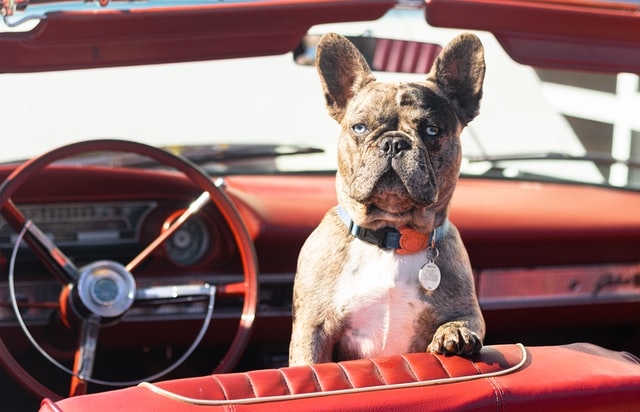
Dog travel by car seems adventurous and easy-going most of the time, but certain things require care. A long drive might be exhausting and uncomfortable for your dog, especially if he is energetic and outgoing. Keep the following things in mind while traveling with him by car
- Always keep your dog in the backseat as the airbags on the front might injure him on a sudden impact.
- Keep your dog in an anchored crate or carrier with a seat belt. It keeps the dog in place, and you can focus on the road.
- Keep your dog’s head inside the window. It is to avoid the debris particles and cold air getting into his lungs and eyes.
- If you have an open-back pickup truck, never keep your dog in its rear parts.
- Frequently rest the car at stops for your dog to exercise and answer the call of nature.
- Share your travel and dog care experience with another person. He will keep an eye on the dog while you use restrooms or go to get something.
- Do not let your dog alone in the car. Heated cars might lead the dog to severe organ damage or even death.
Things to Keep in Your Car
1. Dog Travel Bag
With a dog travel bag, you can organize all the necessary paperwork and pet essentials. It also comes in different designs like cross-body bags to carry small-sized dogs. Maintaining your pet and his essential items in the pack is easy and safe. Travel bags with rear sleeves can be attached to the luggage. Before buying, consider the size and storage of the bag. It should be water-resistant and machine washable. Make sure it contains a separate space for keeping food items.
2. Dog Travel Crate
A crate keeps your dog in a place and safe during the journey. Hard-sided and soft-sided containers are readily available in pet supply stores. It should be large and robust enough to carry a dog. Make sure the crate has handles and grip, proper ventilation, and ID tags on it. The bottom should be leakproof and stuffed with an absorbent. Stock it with dog toys, bottled water, and a pet blanket. You can use these crates with any mode of transportation.
3. Dog Travel Carrier,
A dog travel carrier is another excellent option for the comfortable confinement of your dog. These are generally used for air travel, in-cabin travel, or travel as checked baggage or cargo. Make sure it has a solid floor covered with leak-proof material. It provides ventilation on all sides and a secure locking mechanism. Take test drives with your dog in the carrier. It helps him get comfortable with it during your traveling experience.
4. Dog Travel Bottle
Keep a travel bottle that has been designed to accommodate a dog’s natural drinking style. Make sure it is toxin-free and convenient to use. A bottle carabineer to attach the bottle to the dog’s travel bag, create, or glove box would be an excellent addition.
5. Dog Travel Bed
Double beds come in various sizes, materials, and features that make them durable. These are designed to roll and fold into more convenient sizes for easy handling. These are lightweight, so they add very little to the overall load. Make sure it offers extra warmth, insulation, and comfort. These are generally weather-resistant with waterproof coating and machine washable.
6. Dog Travel Bowl
Dog travel bowls should be portable and ultralight. Silicone bags are collapsible and fold up to fit in the travel bag. Symbols can be used both as food and water storage bowls. It should be waterproof and of adjustable size.
7. Dog Travel Food
On the trips, pack the everyday foods that you give your dog regularly. Make sure there is no motion sickness, upset stomach, or any other illness in your dog. You should store stock of the food in a dog travel bag for a round trip. Use canned pumpkins and yogurt to settle an upset stomach. Keep human food and fancy snacks to a minimum. Reduce meals on travel days to avoid motion sickness, nausea, and frequent littering.
Travel by Train

Many countries allow free dog travel on trains, but some have strict policies and rules. Amtrak trains allow dogs only under 25 pounds, so it would not be an option. But if you are traveling by train, make sure to read all the regulations regarding dog travel. Here are a few things to keep in mind next line:
- If it is your dog’s first time on the train, start a short journey And notice how he reacts. If it remains unbothered, then plan a long trip.
- Driving sickness is common among one in six dogs. So take common medications to make your dog come and comfortable during train travel.
- During scheduling breaks, take him outside for exercise and littering.
- Pack a doggy bag with light snacks, treats, blankets, and other dog essentials. It’s because trains are usually not facilitated with canine necessities.
- Always keep your dog on a lead or carry him in a crate if he is small-sized.
Travel by Ship
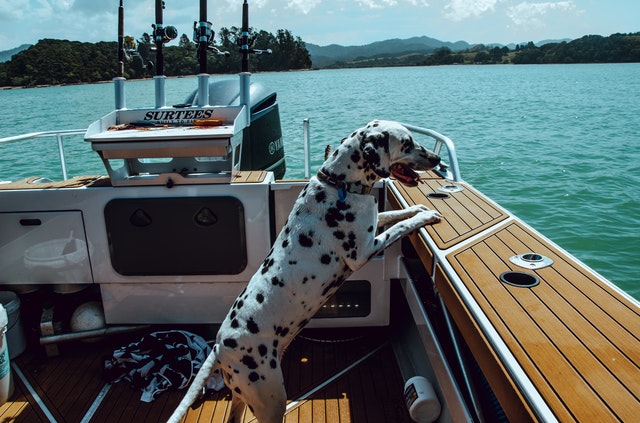
Only a few cruise lines allow dog travel on ocean crossings. These usually confine pets to onboard kennels. Some may allow you to keep the pet in the cabin with strict policies. Keep following things in mind while dogs travel onboard.
- Go through the ship’s policies and check kennel facilities.
- Make sure the shipping kennel is protected from the elements.
- The dog, under no circumstances, may leave the kennel or walk on the deck.
- Equip your dog with a leash and protective muzzle during the journey, even if he is harmless.
Travel by Air
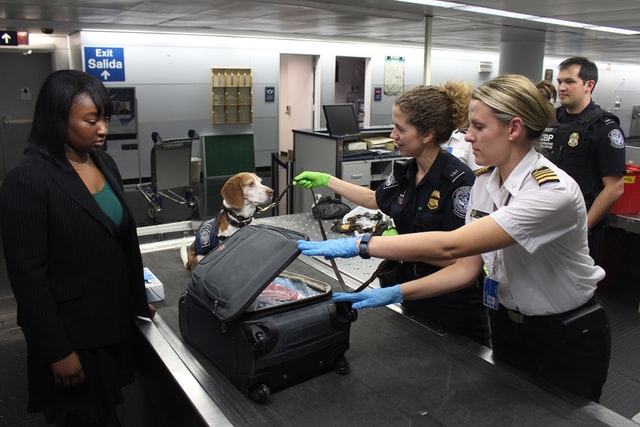
Before you book a flight, consider all other alternatives to flying with your dog. It is because dog travel by air is risky and uncomfortable. Dogs with brachiocephalic are prone to oxygen deprivation and heat stroke during air travel.
- Some airlines allow pets in the cabin with additional charges if he meets the size requirements.
- Many airlines do not allow more than two pets.
- Before the flight, determine the necessary paperwork like health certificates and vaccination records. The certificates should not be more than ten days old.
- Ask the vet if the dog is physically or mentally fit for a flight.
- Dogs with stress and anxiety issues might need sedatives on vet prescription.
- It is better to leave him an empty stomach before the flight to avoid nausea and vomiting.
- Take soft-sided carriers according to airline requirements. It keeps your dog comfortable and restrained under your seat.
- Check the flight starting and destination temperature differences and prepare pet essentials accordingly.
- Federal regulations prohibit pet cargo if the temperature is less than 45°F or more than 85°F for 4 hours.
- Carriers and bags are screened separately, so your dog might escape or get uncomfortable. Therefore, carry him in your arms for screening.
- Book the flight early to get a seat for your dog.
- Book direct flights to minimize traveling hours.
- When you arrive at your destination, go for a long walk with your dog. In this way, your dog gets along well with the new environment.
Items to Pack
- Health and medical certificates
- Contact of vets and emergency numbers
- Come, brush, and flea control products
- Medications
- Collar with ID
- Wipes and grooming products
- Paper towels and stain remover
- Dog food and treats
- Bottled water
- Bowls
- Leash
- Bags for litter
- Pet toys
- Pet blankets
Other Practices While Dog Travel
- Make memories and travel photos with your dog to capture some of the best moments with your body.
- Plan bathroom breaks before and during traveling. It helps your dog to learn too little on different platforms. It also avoids an upset stomach and nausea during the trip
- Bring your dog’s favorite toys and play games with him. It helps him maintain energy levels and keeps him from getting bored.
Lodging
Before you start your journey, find which hotels or restaurants allow pets at your destination. Make sure to take your dog out frequently for socialization. It helps him get along well in the new environment and with strangers. Please do not leave your dog unattended or allow him to destroy property. Check if the room or hotel is safe for dogs, free of electric cords and glass items.
Final Thoughts
Whether you travel for pleasure or move into a new place, taking a dog with you is not a problem anymore. By following these simple guidelines, you can make the journey comfortable and enjoyable both for yourself and your buddy. From safety checks and packing to boarding and feeding, we hope this article has helped you navigate through all types of travel experiences.

